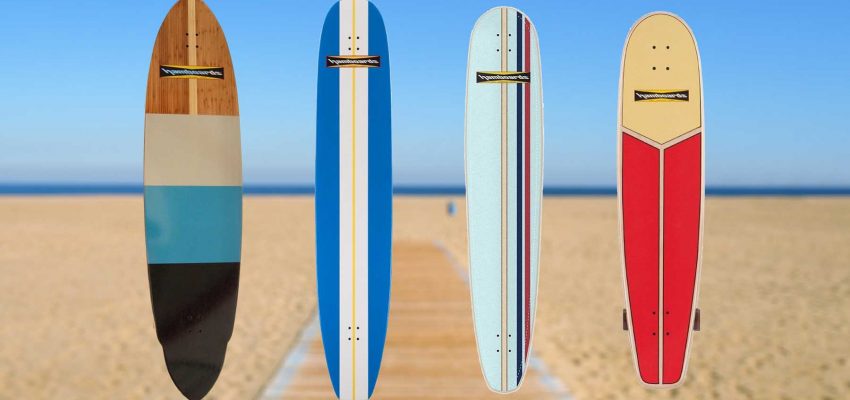The longboard market has a board for every need. Although this extreme variety gives the rider the best buying experience, it’s easy to get overwhelmed and confused. To help find the perfect ride, let us demystify some terms:
Deck Length – typically the first thing to consider, the deck length defines how long the longboard is from tip to end. Different sizes benefit different people and situations – what someone interested in starting wants will not be the same as someone who hopes to do complicated tricks and turns. A new rider should investigate a longer board, which can provide much-needed stability in the beginning. Even advanced longboard riders enjoy a longer board for a more comfortable ride. These boards can range from mid-size (33” to 42”, or 84cm – 107cm) to the long (43” and up, or 109cm and up). Shorter boards under 32” are perfect for experienced trick-style riders, youth, and shorter riders.
Kicktail – the end of the board is angled upwards, like an edge of a skateboard. The kicktail can be handy for tricks, getting up and down from curbs and making quick and precise turns. Most novice longboard users will not use this feature, and a board without a kicktail can be more stable at the back – we suggest that newer riders opt for no kicktail.
Deck Flex – a self-explanatory term, the deck flex can make a ride smoother by absorbing some of the impact of uneven ground or small debris in the riding path. It is also easier on your ankles and knees, so riders who frequent long journeys may opt for a board with more deck flex. Alternatively, decks with less flex offer more stability for the beginner and are more accurate to the original longboards.
Wheel Diameter – how wide the wheel’s diameter is can impact the ride itself. A wider wheelbase lifts the board off the ground, are slower to get up to speed, and can withstand higher speed for longer. Smaller wheels get to speed quickly but lower the board closer to the ground, impacting turning.
Durometer – the hardness of the wheels is a factor in most longboard searches as well. The harder the wheel (measured by ‘A’), the more equipped for speed. The softer the wheel, the more comfortable the ride with enhanced shock absorption.
With these concepts in mind, consider your experience with longboards and your predicted use and go forward. Consider each option carefully, and soon you’ll be enjoying the ride with your longboard, correctly selected for you.
